
Why Isn’t Your Website Showing Up On Google? 8 Reasons and Solutions
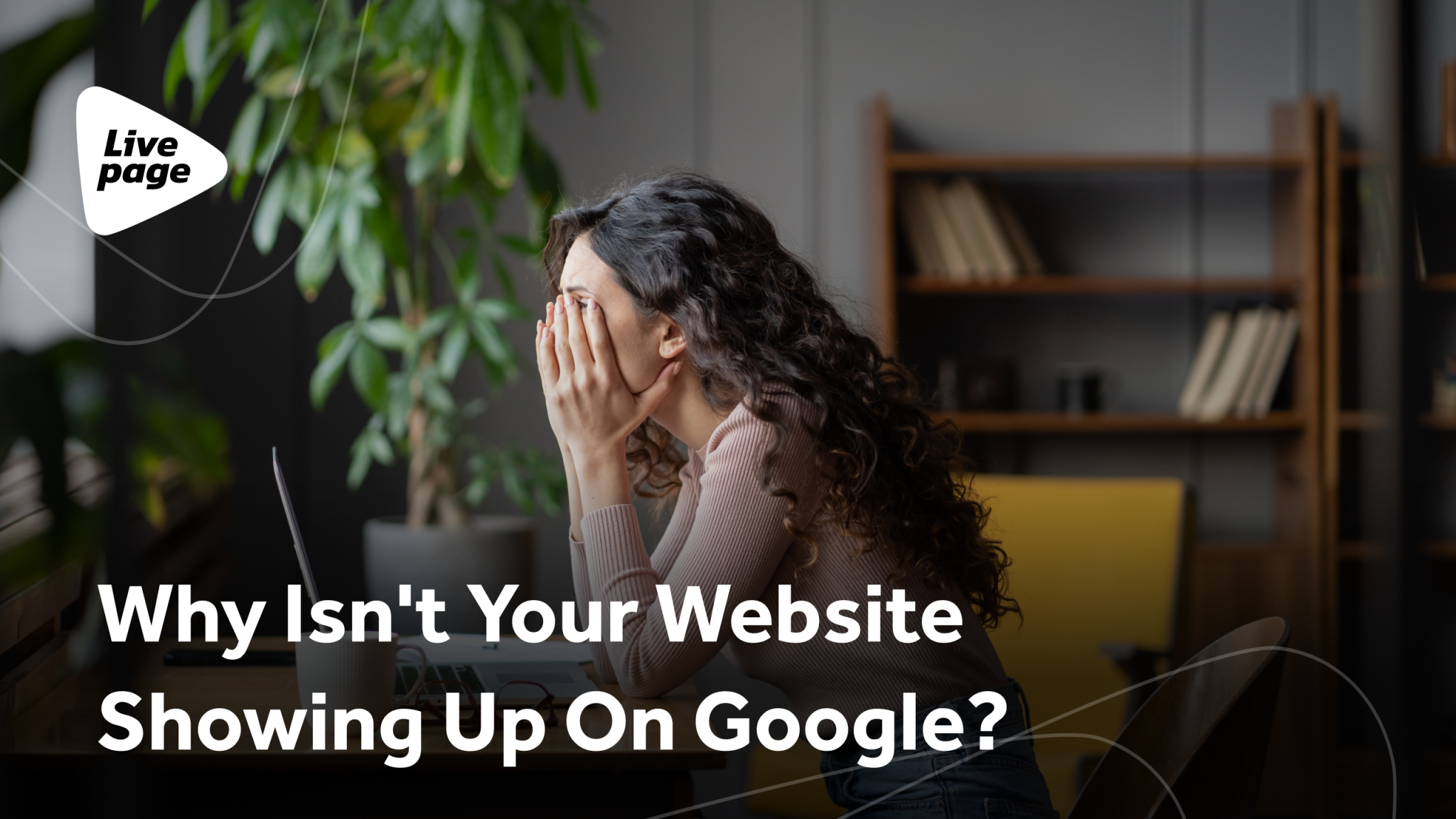
There are a multitude of possible reasons why your website is not showing up on Google. In this article, we will analyze the most common ones, talk about ways to fix them, and increase your chances of taking the coveted top spot in the search results.
8 Reasons Why Your Website Isn’t Showing Up On Google
The most common reasons why your site isn’t showing up on Google include:
- Maybe your website is brand new and hasn’t attracted any significant traffic yet;
- Google not showing websites due to its inability to scan their content is another possibility;
- Your website is lacking high-quality incoming backlinks, another common reason why your website still doesn’t show up on Google;
- The website’s pages don’t align with user intent;
- Your website has duplicate pages;
- You’ve chosen too competitive keywords;
- Poor UX on your site is preventing your website from showing up on Google;
- Your website has a penalty.
Some of these issues are common for new sites, and some are more typical for those that have already brought traffic and conversions, previously occupying top search results. However, understanding how to address these challenges can benefit any website, regardless of its current status.
Your website is brand new
If you’re asking “Why isn’t my website showing up on Google” search immediately after launching it, remember that it takes time for search engine crawlers to discover new web locations. It’s no use hoping that Google will magically figure out your website exists. That’s why web admins often submit pages for indexing and use link building with third-party sources, as this way the search engine will discover the site faster.
Use the “site:” search operator to find out if this is the problem. Enter the search engine and your domain name in the search box. You will see in the search results whether your website is in Google’s database and how many pages it knows about.

You can also use this method to determine if a specific page of your website is indexed.
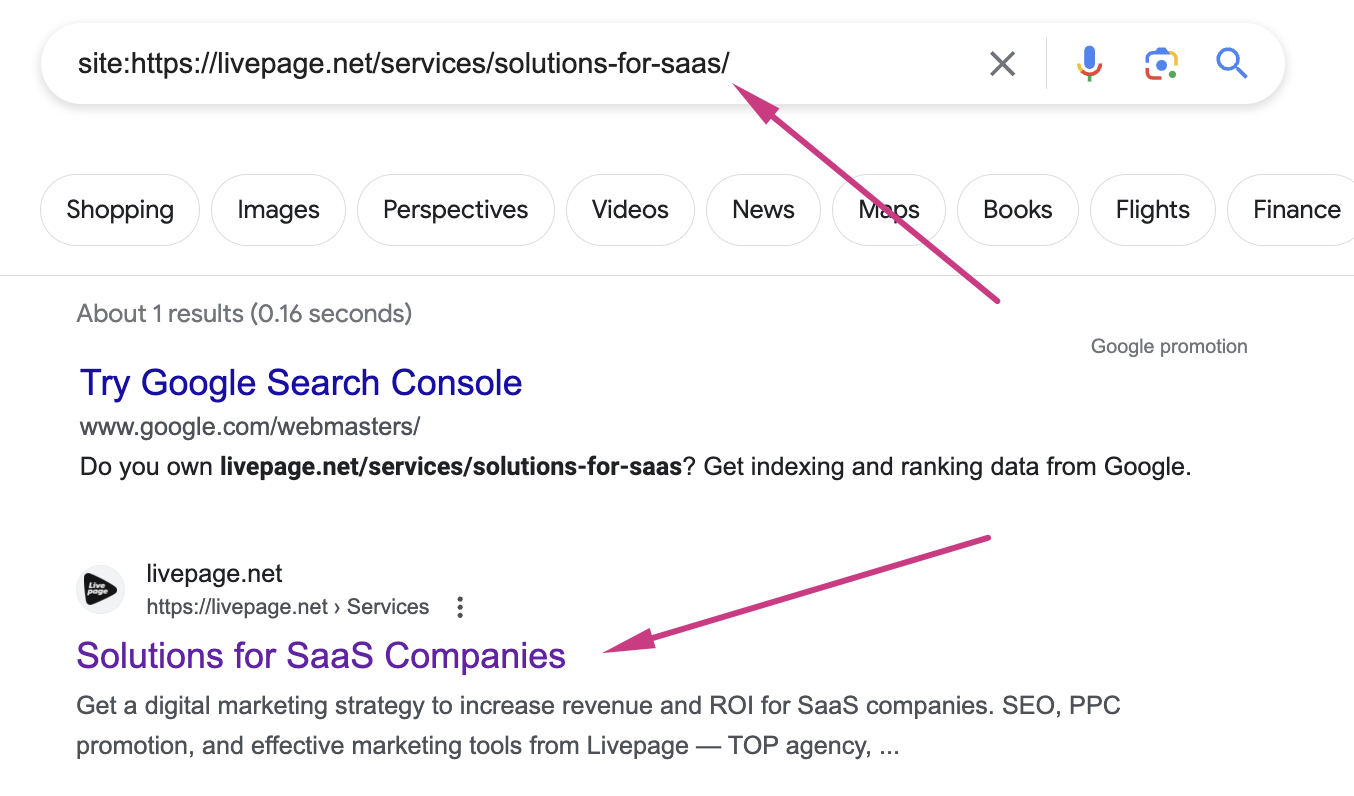
And by the way, sometimes this method may not work correctly — a page may bring organic traffic and even conversions, but it does not appear in the search results with the “site:” operator. Therefore, the more reliable Google Search Console report is the better option here.
In the section “Indexed” — “Pages,” you can see all the pages indexed by the search engine and present in its database.
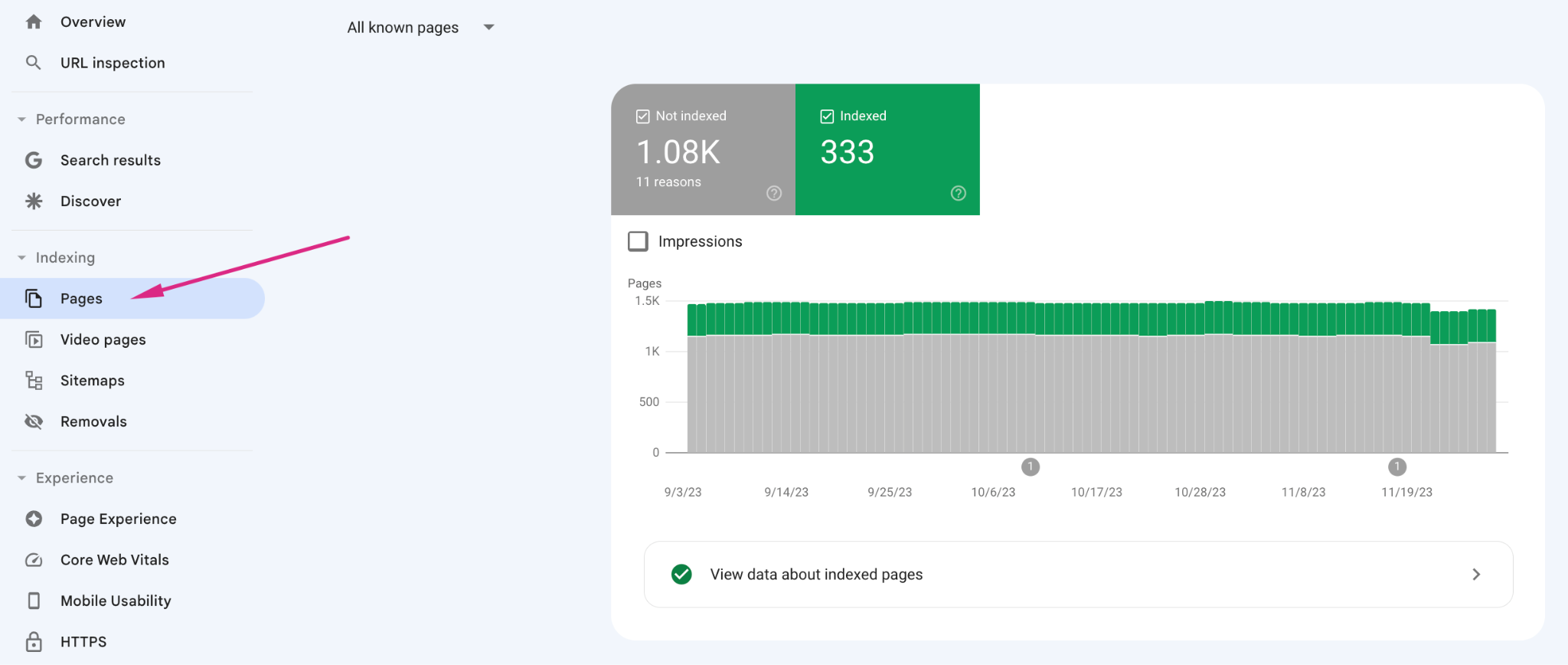
Here, you can also see a list of reasons why some pages of your website were not indexed:
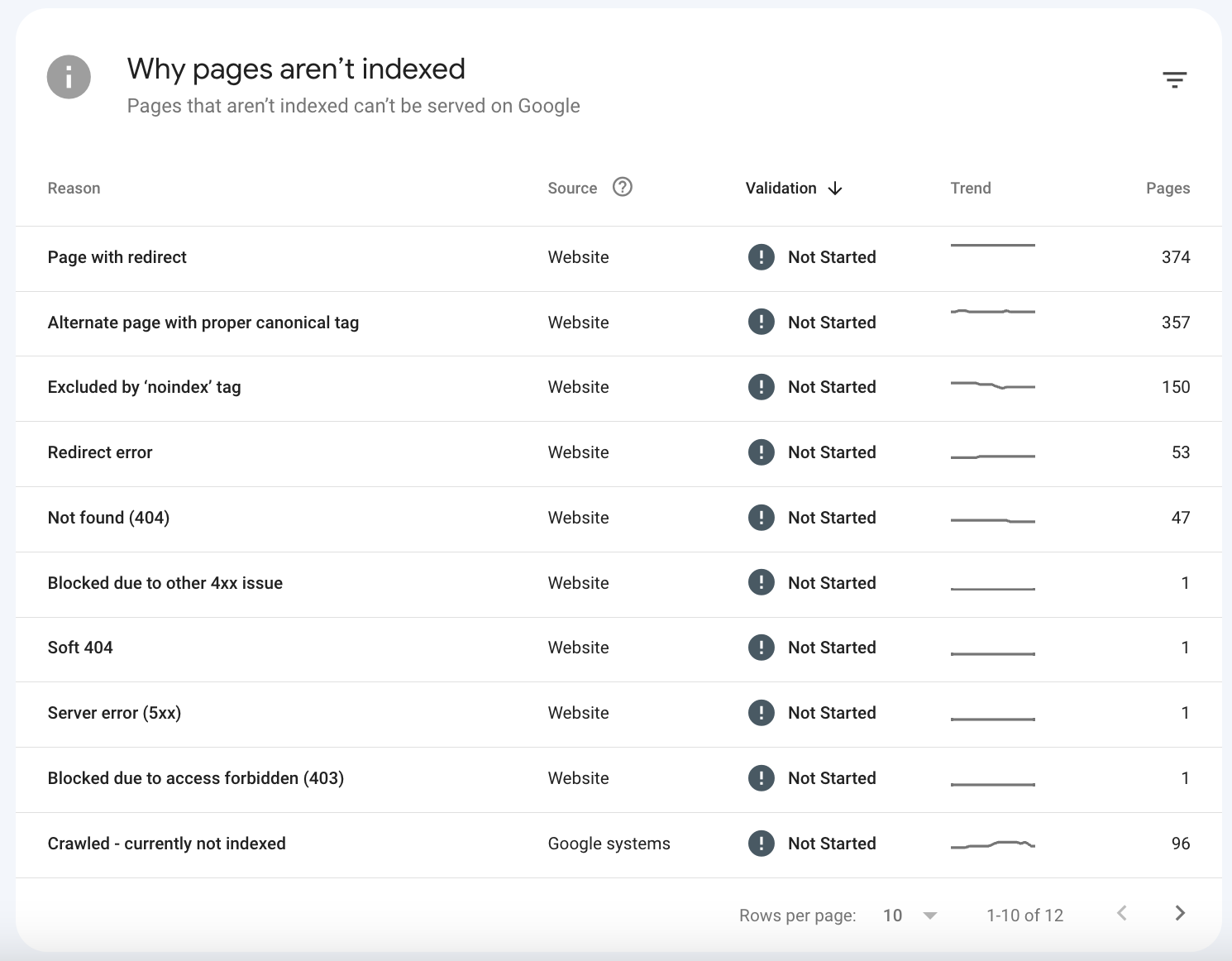
Solution: If a search engine hasn’t indexed your website, the first thing you can do is submit it for crawling and indexing through GCS.
You need to create a sitemap.xml file with a list of all the pages on your website that should be displayed in the search results. You can read about creating such a file on Google Search Central.
Then go to the “Indexing” → “Sitemap” section and submit the sitemap for crawling:

If your website already has a crawled sitemap.xml, but some pages are still not indexed, check the report on unindexed pages and fix the errors that might be hindering the process.
Google can’t scan your website
Why is Google not showing websites despite them adhering to all the regulations for indexing? Well, the reason might lie in some form of scan block. Sometimes, some CMS systems remove the website from search engines if they are misconfigured.
As a rule, a website can be blocked from crawling and indexing in one of the following ways:
- Via the robots.txt file;
- By adding the Robots meta tag to the <head> of the page;
- Via the .htaccess file at the server level.
To make sure that your website hasn’t been blocked from crawling and indexing, check for prohibitions for search robots:
- in the robots.txt file — the website or its pages are closed by adding User-agent: * (name of the search engine bot) and Disallow: /catalog/ (partial or entire URL of the page to be closed). The easiest way to check for prohibitions in robots.txt is to enter the name of your website and then add “/robots/txt” in the search bar. The file is located in the root folder of the website on the hosting, but as a local SEO agency, we recommend not to change anything there if you don’t know how to handle such data and call a specialist instead.

- in the page code — the website is closed by adding the meta tag <meta name=“googlebot” content=“noindex, nofollow”/> to the <head> of the page. To check if this tag is on your website’s pages, go to the page code (right-click on any empty space on the page and then click “View Source”), press ctrl+F, and enter this tag in the line that appears.

- in the .htaccess configuration file — the website is locked, or access to some of its sections (for example, the administrative panel) is blocked. You can find this file in the website’s root folder on the hosting, but once again, it will be difficult for an inexperienced user to figure it out.
Solution: If you have no experience with robots.txt and other ways to block your website from indexing and crawling, you will most likely not be able to fix the problem yourself. In this case, it is better to hire professionals and tell them that “my website is not showing up on Google,” no matter how silly it may sound to you. They will be able to fix the issues without harming the website in the process.
Your website is lacking high-quality incoming backlinks
This is a significant factor to consider if your website isn’t showing up on Google, as external links are an important factor in search result placement. There are millions of websites on the web, and among these millions, Google needs to choose the ones that will take the top positions. Okay, you have good design and high-quality content, but… What’s next? This is where another essential ranking factor comes into play: external links.
No matter how great your content is and how good your usability is, if your competitors have a bunch of links from high-quality donors, your website will rank low.
Besides that, external links are another tool to speed up website indexing.
Solution: Look at how many links your competitors in the TOP 10 have for each cluster of queries you want your website to rank for. After that, calculate the arithmetic mean for each page and start working on your link-building strategy.
Website’s pages don’t align with user intent
If your website does not show up on Google despite having proper software and links, it may be due to a mismatch between your content and what users are searching for. Google is constantly working to ensure its search results show only the most relevant pages to every user’s query. To do this, the search engine constantly develops and improves ranking algorithms, releases updates, and hires assessors who, among other things, check whether the pages in the SERPs correspond to what a person wants to see (this is called user intent).
What does it all mean for you? Well, for starters the content on your pages must match the likely user intent.
Let’s imagine that you are promoting an online pet store. One of its categories is dog food. If you optimize a commercial page with dog food for the query “best dog food,” Google will not show it, or it will occupy the last positions in the TOP 100. Why? The answer is simple: a person who searches for information on the query “best dog food” doesn’t want to make a purchase and isn’t looking for anything specific. They simply want to see what dog foods are available on the market to make an informed choice.
Google thinks the same way because blog articles are at the top for this query:
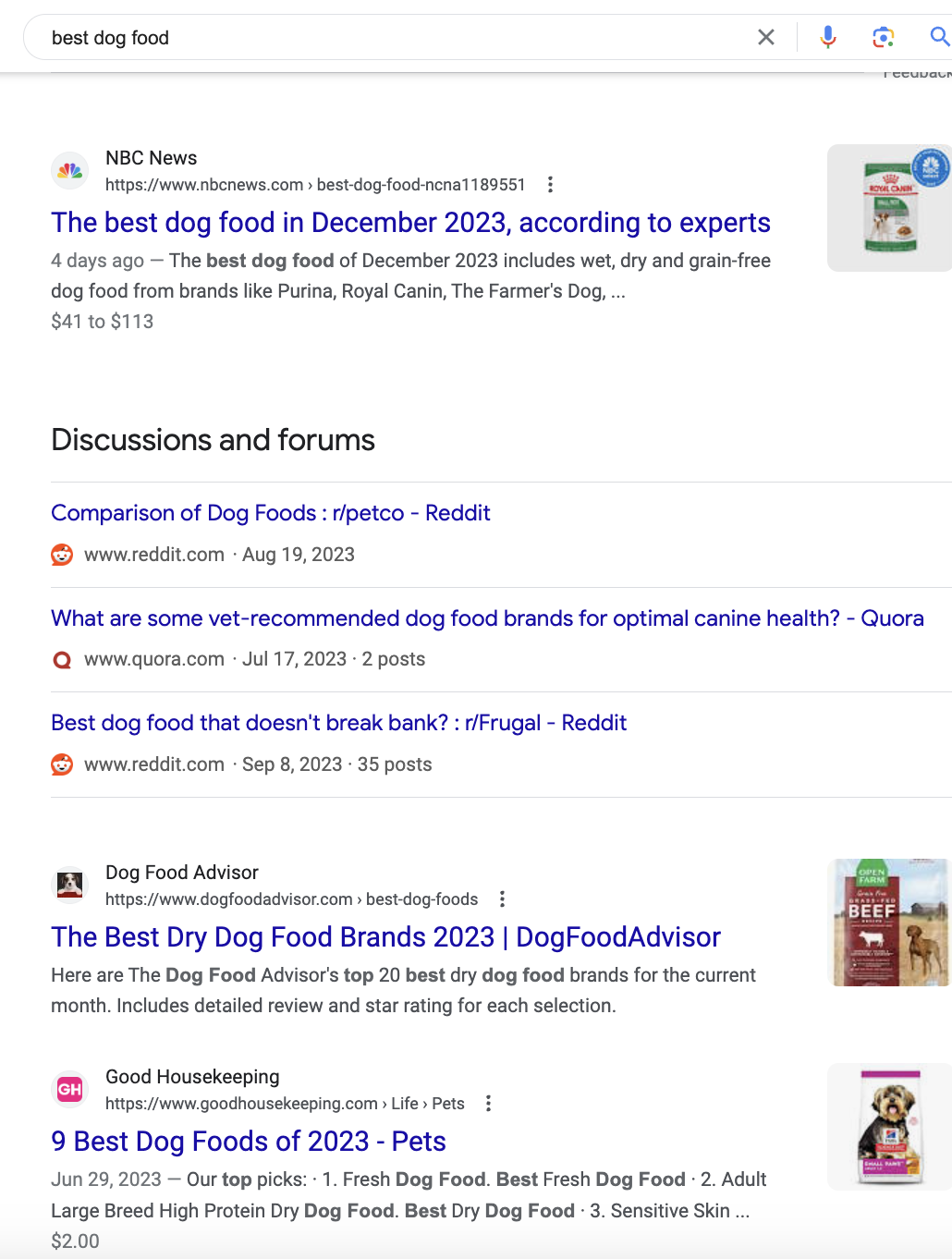
Solution: You need to correctly build the semantic core for your website and each individual page. Try to put yourself in the user’s shoes and ask yourself, “What would I like to see when I enter this query?” Pro tip: If you have doubts about whether a particular keyword is suitable, enter it into the search engine and see which pages are ranked for this query. Commercial or blog pages? What is their topic? How is the content created on competitors’ websites? Does it resemble the content on your page?
Your website has duplicate pages
Duplicate content might be a key reason why your site isn’t appearing in Google search. Firstly, duplicate content on a website can be filtered (i.e., penalized). Secondly, even if there is no filter, duplicate content creates another problem — none of the two or more pages with the same content will rank especially high, as both pages will have the same keywords and compete with each other for a SERP position.
Solution: First of all, duplicate pages must be identified. You can do this with Ahrefs, Screaming Frog, or other tools that SEO specialists use. And if your website is small, you can even do this manually.
The second step to eliminating the problem is to set up canons or redirects for duplicate pages. It makes sense to set up canons if you want both pages to remain on the website and users to be able to access them. Redirects are set when there is no need for a second page. In this case, a 302 redirect to another page is set up from the page that generates less traffic and impressions. Do this and wonder “Why is your website not showing up on Google?” no more.
You’ve chosen too competitive keywords
Going for highly competitive keywords is yet another possibility why you can’t find your website on Google. Suppose your business is in a highly competitive industry. In that case, your website will likely not appear in search results due to the use of overly competitive keywords dominated by stronger players.
Ahrefs can be used to determine the competitiveness of keywords. If a keyword has a Keyword Difficulty score of:
- 0 to 10, the page with it will be easy to promote in the search results;
- 11 to 30, this is a keyword of medium difficulty;
- 31 to 70, this is a highly competitive keyword;
- 71 to 100, the competition for this keyword is so tough that you will most likely never reach the top.
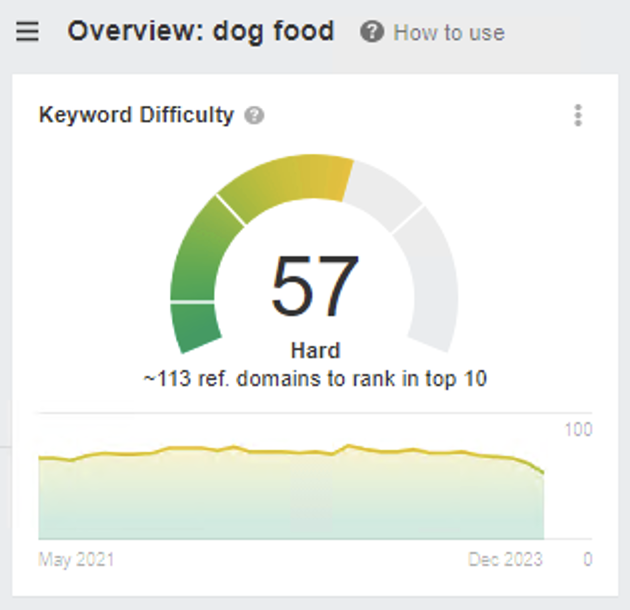
Ahrefs also allows you to check how many links from different domains you need to reach the TOP 10.
Solution: Consider adding low-competitive or “long-tail” queries to your website pages. Even though they have a lower frequency and bring less traffic, it becomes much easier to reach the top search results.
For example, instead of writing a blog post for the general query “dog food” (which has a Keyword Difficulty of 57), it is better to choose the keyword “how to make organic dog food at home” (which has a Keyword Difficulty of 0-10). The second keyword will bring much less traffic and impressions, but you will have a far better chance of getting traffic. The first key is very general and highly competitive, and it will take you several years at best to get a good position for it.
Your website has poor UX
Google prefers websites that can provide users with a positive experience. What does this mean? Fast loading speed, easy website navigation, and responsive design. A poor UI can be a major factor in why your website isn’t showing up on Google.
When a user clicks on your website and then immediately returns to the search results, Google’s algorithms perceive this as if your website or its content is not of sufficient quality. Therefore, if this happens frequently, it will lower the website’s position in the search results.
Solution: Check if your website has any problems with the loading speed, navigation, and adaptation to different devices and browsers. For a more in-depth analysis, you can use Microsoft Clarity or a similar tool to view session records. You can find issues and fix them by analyzing how users behave on your website.
Your website has a penalty
If your website is not brand new and you have not set any prohibitions on crawling and indexing for search engine bots, your website has likely been subject to penalties (also called filters). There are two types of Google penalties, manual and algorithmic, and they are often imposed for:
- viruses and malware;
- hidden links and text;
- cloaking (when you show different versions of a page to search engines and users);
- misleading redirects (when a user is redirected to another page without having clicked on anything);
- irrelevant keywords on the page;
- spammy texts;
- duplicate content on the website;
- spammy external links to the website;
- and so on.
If a website is filtered, there are two possible outcomes:
- website or its pages will be removed entirely from the search results;
- website or its pages will lose their positions in the search results.
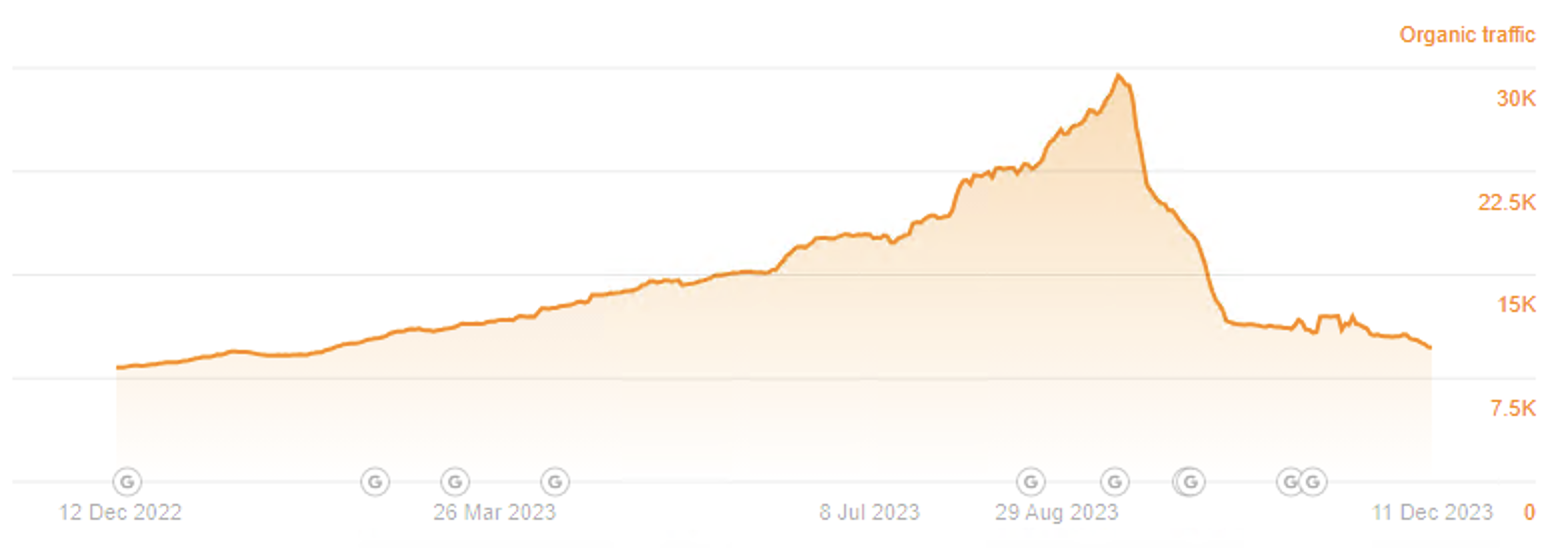
Understanding the difference between manual and algorithmic penalties is crucial to understanding why a website isn’t showing up on Google search.
Solution: Manual penalties are easy to discover because you only need to occasionally check the Manual Actions section of Google Search Console.

If you notice any warnings about imposed penalties, you can fix them and then submit your website for reindexing.
Algorithmic penalties are far more challenging to detect, as you do not receive any warnings in GSC. The most common penalties include:
- Panda, imposed for low-quality content and duplicate texts;
- Penguin, imposed for anchor spamming and low-quality links;
- Hummingbird, which lowers your rating if your pages do not align well with users’ requests. If your website has irrelevant keywords, this algorithm will not allow it to rank high.
One way to check if your website has been subject to algorithmic penalties is to use the Semrush Sensor tool, which shows volatility (i.e., fluctuations) in Google’s search results during updates. A volatility score of 5 or higher indicates changes in a specific search engine ranking algorithm or a general algorithm that covers all search results.
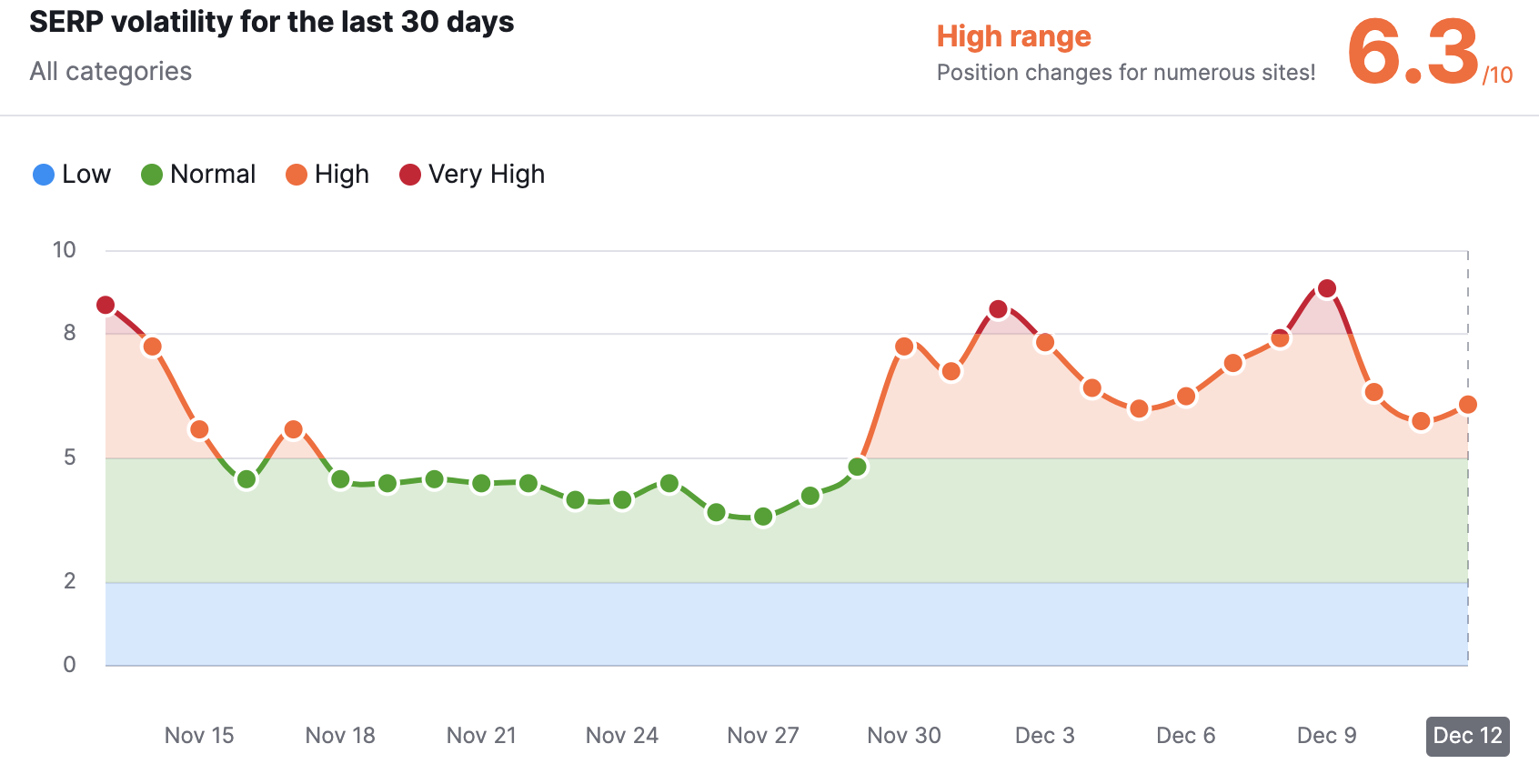
Nonetheless, just the fact that the search results are “stormy” and you can’t find your website on Google does not mean it has been filtered. Sometimes, it takes up to several weeks to deploy an update, and then after a short while the search results return to normal, with websites occupying the same positions as before. If the update process is over and your website hasn’t regained its previous positions, it may have fallen under algorithmic penalties.
Overcoming search engine penalties is a very long and painstaking job, so we recommend you contact professionals to provide on-page and off-page SEO services. who will help you identify and eliminate the causes of such issues.
Wrapping Up
Well, as you can see, there can be quite a few reasons why your website isn’t showing up on Google. Sometimes, it takes a lot of time, research, and search engine optimization to identify and resolve the problem. You can use our article to check your website, or contact the Livepage team if you find yourself struggling with the more challenging aspects of SEO. Providing professional SEO services, we will help you identify the problems that prevent your website from getting to the top and use all our skills to solve them.



















